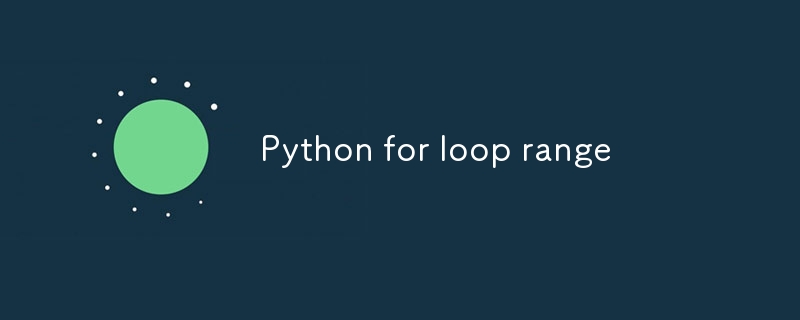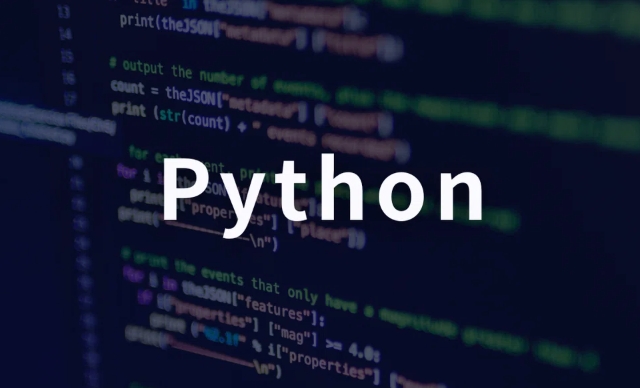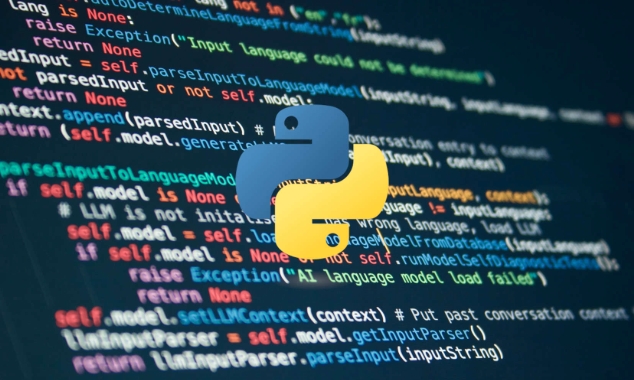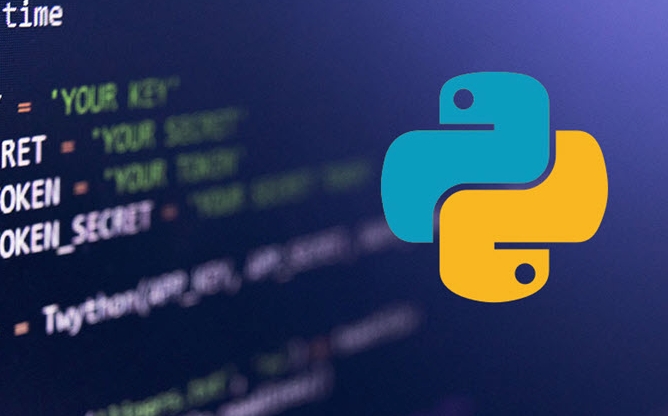In Python, using a for loop with the range() function is a common way to control the number of loops. 1. Used when you know the number of loops or need to access elements by index; 2. range(stop) from 0 to stop-1, range(start, stop) from start to stop-1, range(start, stop, step) add step; 3. Note that range does not contain the end value, and returns iterable objects instead of lists in Python 3; 4. You can convert to a list through list(range()) and use negative step size in reverse order.

Using for loops in Python with range() function is one of the most common and practical ways to control the number of loops. If you need to repeat a piece of code to be executed for a fixed number, or iterate through a sequence of numbers, it is very suitable to use for i in range(...) .

When should I use for loop with range()
When you know exactly how many times you want to loop, or you need to access elements by index, it is suitable to use for and range() to cooperate. For example, print numbers from 1 to 10, traverse each position of the list, repeat a certain action N times, etc.
Unlike while loops that rely on conditional judgment, range() can directly generate a sequence of numbers, allowing the loop to run a specified number naturally.

Basic usage and parameter meaning of range()
The three most common ways to write range() are as follows:
-
range(stop): starts at 0 and ends atstop - 1 -
range(start, stop): start fromstart, tostop - 1 -
range(start, stop, step): Add step control
To give a simple example:

for i in range(5):
print(i)The output is 0 to 4, not 5.
Let’s take a look at an example with a starting value and a step size:
for i in range(2, 10, 2):
print(i)2, 4, 6, and 8 will be printed.
Note:
range()does not include the end value (exclusive), which many people are prone to mistakes at the beginning.
How to use it in actual scenarios
Print content with fixed number of times
For example, if you want to print "Hello World" 3 times:
for _ in range(3):
print("Hello World") Here, the variable name is written as _ is a convention, which means that we do not care about specific values.
Traversing the index of the list
If you want to know their location while operating on elements, you can use range(len(list)) :
fruits = ["apple", "banana", "cherry"]
for i in range(len(fruits)):
print(f"The {i} fruit is {fruits[i]}")Control step size to process data
For example, take a value every other element:
numbers = [10, 20, 30, 40, 50]
for i in range(0, len(numbers), 2):
print(numbers[i])This will print 10, 30, 50.
Common misunderstandings and precautions
Forgot range does not contain end value
range(1, 5)is actually 1, 2, 3, 4, not 1 to 5.I mistakenly thought that range returns a list
In Python 3,range()returns a "itable object", not a real list. If you really need a list, you can convert it manually:list(range(5)) # [0, 1, 2, 3, 4]
The situation where the step size is negative
If you want to loop backwards, remember to start to be larger than stop and set a negative step:for i in range(5, 0, -1): print(i)This prints 5 to 1.
Basically that's it. Although it seems simple, mastering the usage of
range()will save you a lot of trouble when writing loop logic.The above is the detailed content of Python for loop range. For more information, please follow other related articles on the PHP Chinese website!

Hot AI Tools

Undress AI Tool
Undress images for free

Undresser.AI Undress
AI-powered app for creating realistic nude photos

AI Clothes Remover
Online AI tool for removing clothes from photos.

Clothoff.io
AI clothes remover

Video Face Swap
Swap faces in any video effortlessly with our completely free AI face swap tool!

Hot Article

Hot Tools

Notepad++7.3.1
Easy-to-use and free code editor

SublimeText3 Chinese version
Chinese version, very easy to use

Zend Studio 13.0.1
Powerful PHP integrated development environment

Dreamweaver CS6
Visual web development tools

SublimeText3 Mac version
God-level code editing software (SublimeText3)
 PHP calls AI intelligent voice assistant PHP voice interaction system construction
Jul 25, 2025 pm 08:45 PM
PHP calls AI intelligent voice assistant PHP voice interaction system construction
Jul 25, 2025 pm 08:45 PM
User voice input is captured and sent to the PHP backend through the MediaRecorder API of the front-end JavaScript; 2. PHP saves the audio as a temporary file and calls STTAPI (such as Google or Baidu voice recognition) to convert it into text; 3. PHP sends the text to an AI service (such as OpenAIGPT) to obtain intelligent reply; 4. PHP then calls TTSAPI (such as Baidu or Google voice synthesis) to convert the reply to a voice file; 5. PHP streams the voice file back to the front-end to play, completing interaction. The entire process is dominated by PHP to ensure seamless connection between all links.
 How to use PHP combined with AI to achieve text error correction PHP syntax detection and optimization
Jul 25, 2025 pm 08:57 PM
How to use PHP combined with AI to achieve text error correction PHP syntax detection and optimization
Jul 25, 2025 pm 08:57 PM
To realize text error correction and syntax optimization with AI, you need to follow the following steps: 1. Select a suitable AI model or API, such as Baidu, Tencent API or open source NLP library; 2. Call the API through PHP's curl or Guzzle and process the return results; 3. Display error correction information in the application and allow users to choose whether to adopt it; 4. Use php-l and PHP_CodeSniffer for syntax detection and code optimization; 5. Continuously collect feedback and update the model or rules to improve the effect. When choosing AIAPI, focus on evaluating accuracy, response speed, price and support for PHP. Code optimization should follow PSR specifications, use cache reasonably, avoid circular queries, review code regularly, and use X
 python seaborn jointplot example
Jul 26, 2025 am 08:11 AM
python seaborn jointplot example
Jul 26, 2025 am 08:11 AM
Use Seaborn's jointplot to quickly visualize the relationship and distribution between two variables; 2. The basic scatter plot is implemented by sns.jointplot(data=tips,x="total_bill",y="tip",kind="scatter"), the center is a scatter plot, and the histogram is displayed on the upper and lower and right sides; 3. Add regression lines and density information to a kind="reg", and combine marginal_kws to set the edge plot style; 4. When the data volume is large, it is recommended to use "hex"
 python list to string conversion example
Jul 26, 2025 am 08:00 AM
python list to string conversion example
Jul 26, 2025 am 08:00 AM
String lists can be merged with join() method, such as ''.join(words) to get "HelloworldfromPython"; 2. Number lists must be converted to strings with map(str, numbers) or [str(x)forxinnumbers] before joining; 3. Any type list can be directly converted to strings with brackets and quotes, suitable for debugging; 4. Custom formats can be implemented by generator expressions combined with join(), such as '|'.join(f"[{item}]"foriteminitems) output"[a]|[
 python connect to sql server pyodbc example
Jul 30, 2025 am 02:53 AM
python connect to sql server pyodbc example
Jul 30, 2025 am 02:53 AM
Install pyodbc: Use the pipinstallpyodbc command to install the library; 2. Connect SQLServer: Use the connection string containing DRIVER, SERVER, DATABASE, UID/PWD or Trusted_Connection through the pyodbc.connect() method, and support SQL authentication or Windows authentication respectively; 3. Check the installed driver: Run pyodbc.drivers() and filter the driver name containing 'SQLServer' to ensure that the correct driver name is used such as 'ODBCDriver17 for SQLServer'; 4. Key parameters of the connection string
 python pandas melt example
Jul 27, 2025 am 02:48 AM
python pandas melt example
Jul 27, 2025 am 02:48 AM
pandas.melt() is used to convert wide format data into long format. The answer is to define new column names by specifying id_vars retain the identification column, value_vars select the column to be melted, var_name and value_name, 1.id_vars='Name' means that the Name column remains unchanged, 2.value_vars=['Math','English','Science'] specifies the column to be melted, 3.var_name='Subject' sets the new column name of the original column name, 4.value_name='Score' sets the new column name of the original value, and finally generates three columns including Name, Subject and Score.
 Optimizing Python for Memory-Bound Operations
Jul 28, 2025 am 03:22 AM
Optimizing Python for Memory-Bound Operations
Jul 28, 2025 am 03:22 AM
Pythoncanbeoptimizedformemory-boundoperationsbyreducingoverheadthroughgenerators,efficientdatastructures,andmanagingobjectlifetimes.First,usegeneratorsinsteadofliststoprocesslargedatasetsoneitematatime,avoidingloadingeverythingintomemory.Second,choos
 python django forms example
Jul 27, 2025 am 02:50 AM
python django forms example
Jul 27, 2025 am 02:50 AM
First, define a ContactForm form containing name, mailbox and message fields; 2. In the view, the form submission is processed by judging the POST request, and after verification is passed, cleaned_data is obtained and the response is returned, otherwise the empty form will be rendered; 3. In the template, use {{form.as_p}} to render the field and add {%csrf_token%} to prevent CSRF attacks; 4. Configure URL routing to point /contact/ to the contact_view view; use ModelForm to directly associate the model to achieve data storage. DjangoForms implements integrated processing of data verification, HTML rendering and error prompts, which is suitable for rapid development of safe form functions.






